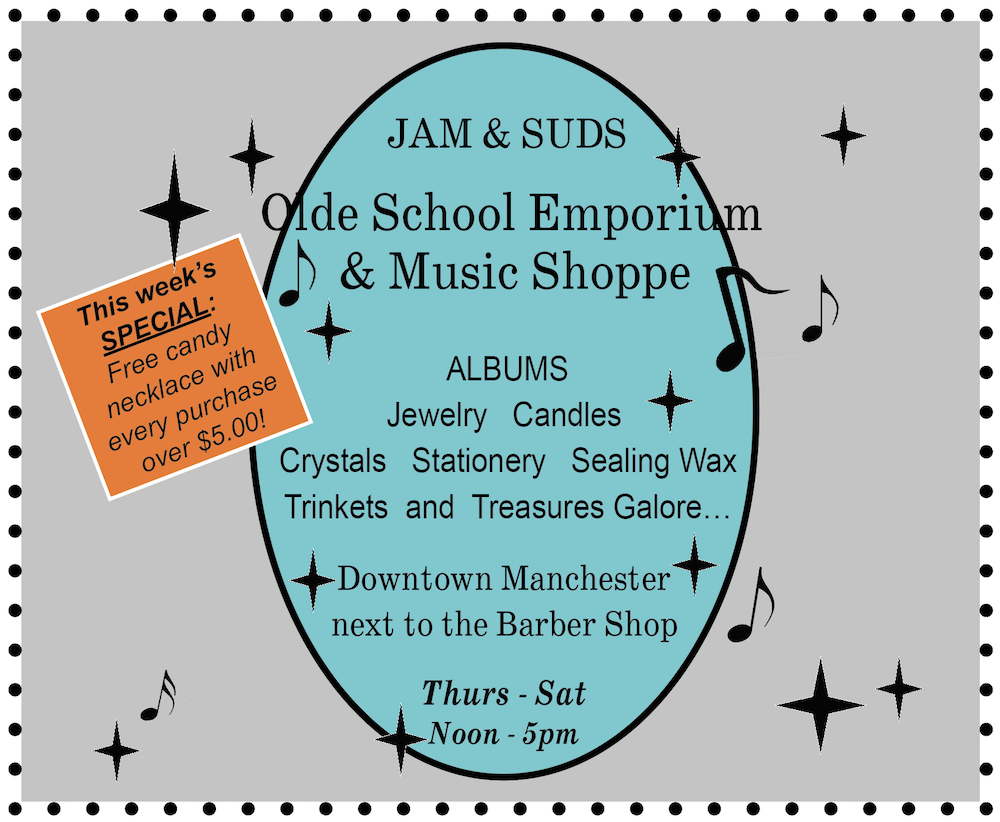Early Manchester Photographers – Part 3 of 4
by Ray Berg and Alan Dyer
In the previous two articles of this series, we discussed early Manchester photographers from 1860 – 1890, a period when commercial photographers provided portrait and street scene images, before the advent of the Kodak camera made personal photography feasible. We started this series by examining the Manchester careers of Susan Speechly, Samuel Davis and Harriet Osborn, three prolific and well-known early photographers.
In Part 3, we continue with Henry Bissell and Charles M. Starks.
Henry Bissell
One of the earliest Manchester photographers for whom samples of work exist is Henry Bissell. Bissell was born in May 1840 in Texas, where his father Theodore ran a mercantile business after serving in the war for Texas independence. Upon his father’s death in 1845, he relocated with his mother Cynthia to their previous homestead in Tecumseh. He served in the Civil War, was never married, and became a photographer only after having followed several other occupations. Bissell operated a studio in Manchester from at least 1867 through 1868, although the date of his arrival here is uncertain. The Manchester Enterprise, the best source for tracing Manchester photographers, did not begin publication until 1867. On October 17 of that year, the Enterprise reported: “As we were passing up the street this morning, we noticed a grand rush of people pouring into Bissell’s photograph rooms to secure some of those perfect pictures he is daily printing.” His business was suspended for a short while in 1868, when Graham and Goodyear built the brick wall of their new building and obstructed the windows of Bissell’s studio. By September 1868, Bissell was back in business with Mat Blosser’s enthusiastic endorsement: “Henry Bissell will open a NEW Photographic Gallery in this village during the present month. Pictures 50 cts. or less. Don’t be humbuged [sic] by artists.”
The “artist” reference is of interest. The advent of photography put many portrait painters out of business. Photographers, who wanted the public to view photography as art, adopted the terms “artist” and “art gallery” in an attempt to promote their work as a less expensive, but no less artistic alternative to portrait painting. On September 17, 1868, Blosser wrote: “The Graham and Goodyear building is finished at this point and Graham has adapted a portion of it for a jewelry store (including silverware and notions). Henry Bissell is to have a photo gallery on the second floor. Now is the time to secure one of those beautiful Photographs at Bissell’s Art Gallery.” In spite of his apparent success, Bissell sold his studio and its contents to Edward Graham in December 1868. Graham then sold to Susan Speechly a short time later. Bissell moved to Toledo, where he spent the majority of his photographic career. He also engaged in truck farming in Lenawee County during this period, before retiring to Tecumseh where he lived out his life as a part-time photographer.
Figure 7 portrays Addison DeForest Kief in 1867, a young man wearing a dress for the formal portrait, as was appropriate at the time.
Figure 7 – Photo of Addison Deforest Kief, 1867, by Henry Bissell (front and rear)
Charles M. Starks
A different style of photography of the time was the portable, roving photographer. The best example in Manchester is Charles M. Starks, who was mentioned in the Manchester Enterprise on March 28, 1878: “Mr. C. M. Starks, the photographer, familiarly known in this section as ‘Starks on Wheels’, was in town on Monday and gave us a call.” Also, on April 4: “Photographs may now be had at Stark’s Gallery on Wheels in Ann Arbor for $1 per dozen, tintypes, 1, 4, 8, or 16 for 50 cents.” Starks employed a traveling photography carriage with presumably a darkroom, and could produce prints on site.
Charles Starks was born in July 1834 in New York. By 1860, he was a photographic artist in LaPorte, Indiana. In the 1870 census, Starks is found in Fenton in Genesee County. His business travel was quite extensive, and he became known for his outdoor shots and photographs of rural homes and families. On December 2, 1876, the Enterprise reported: “The band [Manchester Coronet Band] marched down to Stark’s car, on Thursday last and stood for a picture.” See Figure 8. Starks was married on June 14, 1876 to Emma L. Dawes of Norvell, and the 1880 census shows them living in Brooklyn. By 1900, they had moved to South Lyon in Oakland County, where Charles passed away between 1900 and 1910.
Figure 8 – Manchester Coronet Band, November 1876, by Charles M. Starks
In Part 4 of this series, we look at our ongoing efforts to locate daguerreotype and tintypes of Manchester residents and settings, the earliest form of photography.











You must be logged in to post a comment Login